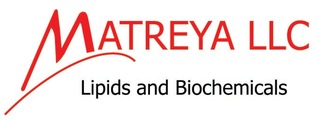服务热线
021-60498804
产品中心
/ Products Classification 点击展开+
| Cat. Number | 1167 |
| Chemical Name | 1167 10417-94-4 二十碳五烯酸(all cis-5,8,11,14,17) Eicosapentaenoic acid (all cis-5,8,11,14,17) |
| CAS Number | 10417-94-4 |
| Mol. Formula | C20H30O2 |
| Mol. Weight | 302 |
| Qty 1 |
25mg |
| Appearance | liquid |
| Application Notes | 99%,GC, TLC |
| Synonym | 二十碳五烯酸(all cis-5,8,11,14,17) Eicosapentaenoic acid (all cis-5,8,11,14,17), |
| Solubility | chloroform, hexane, ethyl ether, ethanol, DMSO, DMF |
| Storage condition | -20℃ |
| References | Application Notes: Eicosapentaenoic acid (EPA) is an omega-3 fatty acid and is an essential fatty acid in mammals. It is among the most abundant polyunsaturated fatty acids in fish oil although fish obtain EPA from algae. Levels of EPA (and other omega-3 fatty acids) have been linked to many diseases and disorders. Low levels of EPA are associated with depression, schizophrenia, and Alzheimer’s disease1 and supplementation with EPA is being investigated for its use as a treatment. However, a diet rich in EPA may lead to enhanced lipid peroxidation. It is anti-hyperlipoproteinic (helps prevent abnormal lipid levels in the blood) and it is thought to help reduce the risk of atherosclerosis, sudden cardiac death, neurodegeneration, and various inflammatory disorders. EPA is also thought to be able to increase the beneficial effects of chemotherapy and may help to prevent cancer and attenuate responses of T-cells and macrophages. EPA also improves insulin sensitivity while at the same time inhibiting cell proliferation2 and has been found to activate epithelial sodium channels. Recent studies suggest that oxidized (as opposed to native) EPA is responsible for anti-atherosclerotic, anti-inflammatory, and anti-proliferative effects.3
References: |





